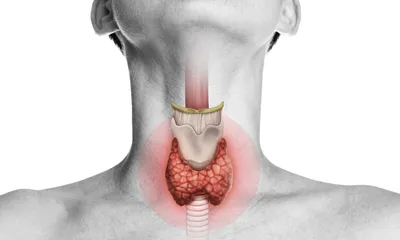Parkinson's Disease
-
Description
-
Signs & Symptoms
-
Anatomy
-
Cause
-
Diagnosis
What is Parkinson’s Disease?
Parkinson’s Disease is a nervous system disorder and degenerative brain condition where the person slowly loses increasing levels of voluntary muscle control and the ability to have normal balance and movement capacities. Mental faculties and the function of a person’s senses plus other non-motor functions may also be detrimentally affected when a person has Parkinson’s disease. It is a disorder that is more common in older people, and men tend to develop Parkinson’s more often than women do.
There are different stages to Parkinson’s disease, and it is not uncommon for people with the disorder to have very mild or no symptoms at all in the early stages of the disease. Some sufferers may have had Parkinson’s for more than a decade before motor and non-motor symptoms start to present themselves and lead them to seek medical advice and treatment.
What Causes Parkinson’s Disease?
Most people who develop Parkinson’s disease do so because they have a genetic predisposition for it. If a parent or other family predecessor has had Parkinson’s, it is more likely that you will have it too. There are 7 different gene types known to factor into Parkinson’s if they start to express differently.
If a person develops Parkinson’s without a genetic predisposition, then it is almost always considered to be idiopathic, meaning that medical researchers are unable to determine exactly why someone has developed the disease. With idiopathic Parkinson’s, what happens is that the way the body uses a-synuclein protein is altered, and protein misfolding occurs. This protein builds up and starts to clump in what are called Lewy bodies, and the buildup has toxic effects and promotes cell damage.
Induced Parkinsonism is also possible, and this involves people having the disease’s symptoms while not actually meeting the diagnosis criteria for it. Parkinsonism can be the result of medication use, encephalitis (brain inflammation), exposure to toxins or poisons, and major head injuries (post-traumatic parkinsonism).
Parkinson’s Disease Symptoms
The symptoms seen with this major nervous system disorder are divided into two categories: motor and non-motor symptoms of Parkinson’s disease. Motor symptoms can include joint rigidity and stiffness, slowed body movements (bradykinesia), tremors in muscles while they are at rest, reduced eye blinking, swallowing difficulties (dysphagia), unstable posture, and difficulty with walking gait.
Non-motor Parkinson’s disease symptoms may include drooling, losing the sense of smell, speaking softly (hypophonia), having restless leg syndrome, or constipation or other gastrointestinal problems. They may also start to lose natural expression in their face and may have a more mask-like appearance to it.
Parkinson’s Disease Treatment
The most conventional approach to Parkinson’s disease treatment is to have the patient on a course of medication with ones like Mirapex or Requip. These are dopamine-agonist drugs that promote more of the neurotransmitter being available to the brain so that the bradykinesia and tremors of Parkinson’s, along with other symptoms, are not as pronounced.
Use of medications to treat specific adjoining symptoms is also possible, and for relief from erectile or sexual dysfunction, fatigue, constipation, sleep problems, or depression/anxiety resulting from Parkinson’s.
For people in the later stages of this disease and unable to tolerate Levodopa therapy, it may be possible to get help from deep brain stimulation for Parkinson’s. A device is implanted that delivers electrical currents to areas of the brain so that the neural messaging is reconfigured and doesn’t promote Parkinson’s the same way. In rarer instances, a patient may be approved to have stem cell transplants or neuron-repair treatments.
Signs & Symptoms
- Tremor
- Slowed movement (bradykinesia)
- Rigid muscles
- Impaired posture and balance
- Loss of automatic movements
- Speech changes
- Writing changes
- Difficulty swallowing
- Sleep disturbances
- Depression and anxiety
Anatomy
- Basal ganglia
- Substantia nigra
- Dopaminergic neurons
- Brainstem
- Cerebral cortex
- Nervous system
- Muscles
- Joints
- Motor pathways
Cause
- Genetic mutations
- Environmental factors
- Age-related degeneration
- Family history
- Exposure to toxins
- Oxidative stress
- Mitochondrial dysfunction
- Inflammation
- Head trauma
Diagnosis
- Neurological examination
- Medical history review
- MRI
- CT scan
- DaTscan
- Blood tests
- Genetic testing
- Response to Parkinson's medication
- Electromyography (EMG)
- PET scan



